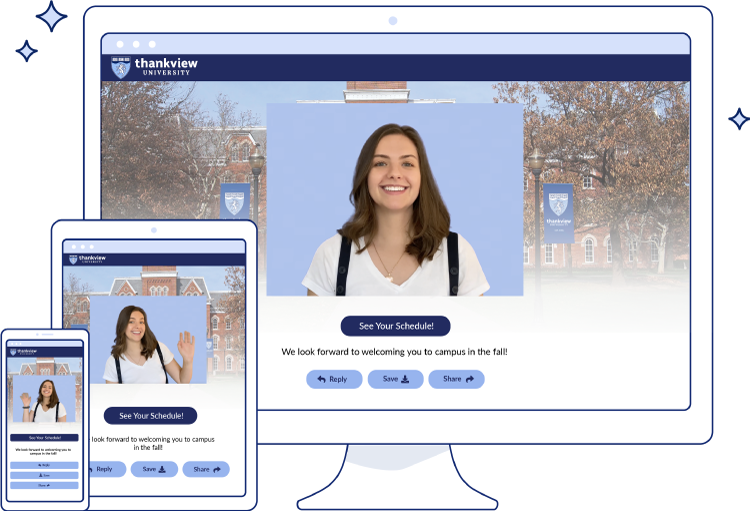How To Use Crowdfunding Platforms for Nonprofit Fundraising
The year 1997 gave us the inception of modern-day crowdfunding. It started when British rock band Marillon raised $60,000 in donations from fans to fund their reunion tour. One devoted fan offered to go so far as to put the funds needed in an escrow account so donors would receive their contribution back if the efforts were unsuccessful. Not long after this, more formal crowdfunding platforms started making appearances based on the model of Marillon.
Before you start your own crowdfunding effort, you’ll want to be sure your organization or project is ready to launch this type of campaign. Take a look through the steps below to determine if your nonprofit is all set up to fundraise with a crowdfunding page. We walk you through what you need to know about each step of your next crowdfunding campaign from pre-launch to wrap-up.
Types of Crowdfunding
Crowdfunding is a familiar option for many startups trying to raise funds early on. If you’re on social media, odds are you’ve scrolled past at least one campaign this week. Popular platforms like Kickstarter, GoFundMe, and Indiegogo have become well-known fundraising platforms.
Here are some common types of crowdfunding:
- Debt crowdfunding: Also known as peer-to-peer lending, this is a popular alternative to traditional business loans.
- Equity crowdfunding: Generally suited for small to medium-sized business owners seeking a large amount of capital to launch or scale their business.
- Reward-based crowdfunding: Generally used for startups and new small businesses, donors can earn rewards based on the amount they donate.
- Donor crowdfunding: One of the most popular fundraising types, donor crowdfunding is simply asking many people to help raise money for nonprofits or other personal causes.
More than likely, as a nonprofit, your organization will be looking for a donor crowdfunding site.
Evaluate the Goals of Your Fundraiser
Crowdfunding is not a great tool to raise general operating funds or to substitute your annual appeal. Be sure to identify exactly what you are raising funds for.
Are you looking to raise $5,000 to build a playground for inner-city youth in 30 days? Perhaps you’re looking to raise $25,000 in medical supplies for those in need by the end of the year. Be sure your goals are not too lofty as this may dissuade donors from giving. Be realistic and provide specifics around the need and the timeline.
No matter your nonprofit organization’s mission, you’ll get more buy-in and engagement if your donors know what they are supporting and the specific needs they’re meeting.
Assess Your Audience
You’ll need at least a starter audience for your crowdfunding campaign to be successful. While there are some comprehensive crowdfunding platforms available, you do need to supply the audience. A strong following on social networks will be an asset in your crowdfunding campaign.
When you’re sure you have an audience, you’ll want to be sure to get to know them. Take a close look at what your average donor looks like to be sure your messaging is as targeted as possible.
Once your audience is identified, craft your campaign to be aligned with your mission and your audience, which we’ll discuss in more detail below.
Choose a Crowdfunding Site

With so many crowdfunding platforms to choose from, it makes sense to assess your needs and weigh your options. While the available crowdfunding platforms and services operate with the same premise, they do have unique attributes and features to consider.
You’ll find different features and fees for credit cards, platform usage, and payment processing. Most platforms operate on an all-or-nothing model, meaning if your campaign does not meet its goal, all money is returned to your backers.
Take a look at the highlights and differences between some of the best crowdfunding platforms on the market.
Kickstarter: Kickstarter boasts roughly 200,000 successfully funded projects to date. This platform is best suited to specific project-based campaigns. There is no payment processing fee if your drive is not successful and donated funds are returned to the donors.
GoFundMe Charity: GoFundMe Charity is a widely known and trusted platform. Rich with customizable features, this platform also allows organizations to review data collected for specific campaigns for easy evaluating.
Indiegogo: Indiegogo is known to attract arts-minded donors. They offer a Flexible Funding option so that your organization can keep funds raised even if the goal is not met. Indiegogo is also a good option for creative projects that don’t fit into other platforms’ predefined categories.
Patreon: Patreon is unique in that it offers funders a monthly subscription-based contribution, rather than a one-time gift. This platform is also well suited for more general fundraising as opposed to a project-based campaign.
ThankGiving: ThankGiving, powered by Givebutter, provides donors the option to cover the processing fee at the time of their donation. Fundraisers are often able to keep up to 100% of the donations received.
Do Some Pre-Campaign Planning
Once you’ve selected the fundraising platform best suited for your organization, you’ll want to start mapping out your fundraising campaign. It may seem obvious, but you should be treating this as a campaign, which means getting the word out!
Campaigns that reach 30% of their goal within one week of their launch are most likely to succeed. If you launch to an audience that is already as fired up about your cause as you are, they’ll be anxiously awaiting the opportunity to support you.
Individuals between 24-35 are most likely to participate in crowdfunding campaigns and those over 45 are significantly less likely to back campaigns. Keep this in mind when creating your campaign materials.
Take a look at the more successful campaigns that have been run on the platform you’ve chosen and make notes on what worked. There’s also lots to learn from campaigns that were not successful.
Think about the different platforms you have available to promote your campaign before you even launch. You can send out pre-launch emails to your email lists and start talking about your campaign on social media platforms to generate interest.
Launch Your Campaign

After building your fanbase and doing your research, it’s time to get your campaign materials together and launch! Your crowdfunding platform won’t do all the work for you; the marketing and PR are still up to you.
Use storytelling to promote awareness and empathy in your audience. Share why your organization is passionate about raising money for this campaign in particular. Focus on the emotional impact of your organization to encourage even more buy-in from potential donors.
Always demonstrate your project’s value from your donor’s perspective and not that of your organization! You can even request and share testimonials from those directly affected by your project for a more personal touch.
Be sure to have all of your campaign images, video, and other digital assets polished and readily accessible for easy sharing on social media. Video is a great option to relay a lot of information and emotion in a short period of time, and crowdfunding campaigns that include video bring in 105% more than campaigns without video!
Even with the most compelling copy and emotional heartstring-tugging story, seeing $0 in the “amount raised” box might make people think twice before contributing. Consider a soft launch of your campaign to your closest existing network first. Once your crowdfunding website is live, send links to this close network that already knows and trusts you. There’s safety in numbers, and seeing others contribute will boost your more distant network’s confidence.
Post-Launch and Project Wrap-Up
After launching your campaign, you’ll want to be sure to send out regular progress updates. Use your social media platforms and email to keep donors and followers posted on the amount of money you’ve raised towards your fundraising goal.
Seeing your success and hearing updates on your progress could even prompt additional contributions, shares, and likes!
Be sure to send timely and sincere thank yous to your supporters. Let them know how their contribution helped and how much they are appreciated.
This is all easier with automated videos that do a lot of the legwork for you. If you’re interested in finding out how you can leverage the power of personalized videos in your next crowdfunding campaign, book a demo with the ThankView team today!
